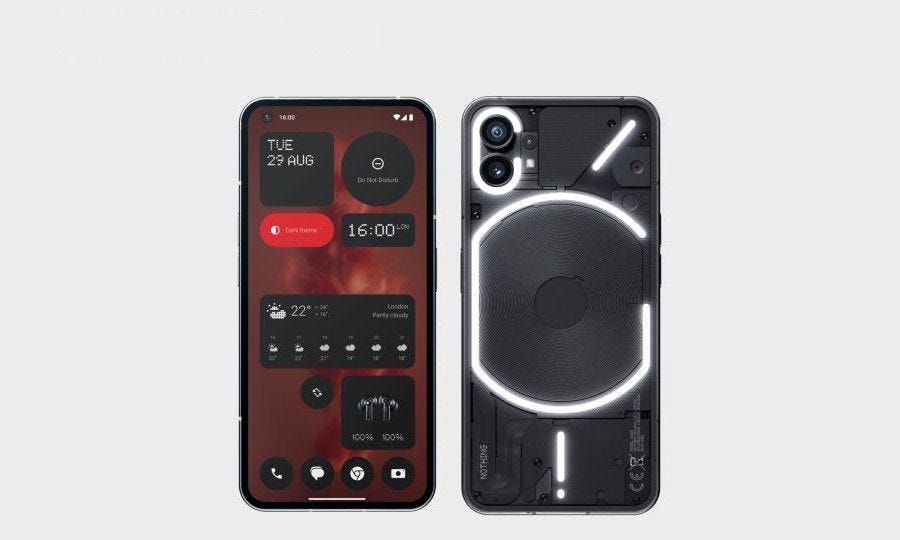The Story of Nothing
How Nothing is redefining tech marketing and what is Carl Pei’s vision?
In an industry dominated by tech giants like Apple, Google, and, a London-based startup is making waves with its unconventional approach to consumer electronics.
Nothing, founded by OnePlus co-founder Carl Pei, is not just creating products but it’s reshaping how we perceive and interact with technology.
The start-up sold 750,000 units of the Nothing phone 1 and earbuds generating an annual revenue of $200 million.
The Vision Behind Nothing
Carl Pei’s journey in the tech world is nothing short of remarkable. As a teenager, he was at the forefront of tech adoption, always eager to embrace the latest innovations.
“I’m usually a very early adopter,” Pei recalls. He was usually the first in his group of friends to get on YouTube, Facebook, and Twitter.
“It just felt like everything kept improving all the time when I was younger, and it gave me a lot of optimism that the future would become much better.”
However, Pei’s optimism waned as he observed the tech industry’s stagnation. “The industry was just so boring,” he says, explaining his motivation for founding Nothing.
This disillusionment led him to leave OnePlus, the company he co-founded, on his 31st birthday to pursue a bolder vision.
This reminded me of a quote I read from a blog titled Six Takeaways From My Conversation With Sir Richard Branson, Founder of Virgin Group, written by Hande Cilingir, Cofounder & CEO at Insider. One of the takeaways, Branson quoted:
“The cruise business was very, very staid and pretty boring. Our team has created a cruise company that’s exciting and fun, and it’s for adults only. And, you know, people absolutely love it, they come off, booking again…so, I think [it’s about] looking at industries that are a little bit stale, and then and then getting in there!”
Pei’s departure from OnePlus was inspired by Jack Ma’s advice: “In your 20s you should find somebody to learn from and in your 30s you should try something on your own.”
This philosophy propelled Pei to take a leap of faith and start Nothing in October 2020.
How Nothing Cracked the Code
1. They differentiate themselves through design
“Insanity is doing the same thing over and over again and expecting different results.”
Nothing’s first strategy is to stand out in a crowded market through distinctive design.
The company’s smartphones feature a unique “glyph” interface — lights on the back of the phone that serve as a notification system. This, combined with a transparent design, makes Nothing phones instantly recognisable.
“If you’re just doing things like everybody else, then it’s not going to be fun…Creativity is very, very important to us.”
The glyph interface is more than just an aesthetic choice. It is also a functional innovation. The LED strips on the back of the phone can:
Display different light patterns for specific contacts, allowing users to know who’s calling without looking at the screen
Act as a progress bar for charging, giving a visual indication of battery level
Sync with ringtones, creating a unique audio-visual experience for each notification
Function as a fill light for the camera, providing softer illumination for photos and videos
Nothing’s design philosophy extends beyond the phone itself. Their earbuds, the Ear (1) and Ear (stick), feature a transparent case design that showcases the internal components.
The Nothing Phone (2) further refined this design language. As Pei explained in an interview, “We wanted to create something that felt fresh and unique in the smartphone market.”
Nothing OS, the company’s custom Android skin, complements the hardware design with its unique aesthetic:
A monochromatic color scheme that reduces distractions and aligns with the hardware’s minimalist design
Custom widgets that blend seamlessly with the overall interface
A dot-matrix font reminiscent of early digital displays, creating a distinctive visual identity
This focus on distinctive design has paid off.
As tech reviewer MKBHD noted in his review of the Nothing Phone (1), “This is probably the most unique-looking smartphone I’ve ever used.”
2. They niched down
Rather than competing directly with established giants in the flagship segment, Nothing has strategically positioned itself in the mid-range smartphone market. This decision allows the company to:
Build trust gradually without the pressure of justifying premium prices (like Apple)
Reduce production costs and risks associated with high-end devices
Focus on perfecting a limited product line, releasing only one new phone and set of earbuds annually
“What I learned is that at its core, it’s all about the product. I think a great product is kind of scaling in the intersection between engineering and creativity.”
3. Building a strong brand image and online presence
For any new entrant in a competitive market, product excellence alone isn’t enough, visibility is crucial. Nothing has embraced this reality with a robust, organic marketing strategy that leverages social media platforms to their fullest potential.
The founder himself is also very hands-on when it comes to creating and distributing content about Nothing.
YouTube presence: He frequently stars in videos on Nothing’s YouTube channel, presenting new products, responding to customer reviews, and even analysing competitors’ devices
X engagement: He maintains an active presence, sharing insights, responding to customer queries, and injecting personality into the brand’s online persona
Nothing’s approach to marketing is summed up in Pei’s vision: “What we want to do is make technology fun again. Today, tech companies are almost seen as evil companies. Why did we collectively lose faith in technology? And what if it could be different?”
4. Targeting an overlooked market segment
While Nothing is headquartered in the UK, their primary customer base isn’t concentrated in the UK or the US.
Instead, they’ve set their sights on emerging markets, crafting mid-tier smartphones for consumers in developing countries who find premium devices from established brands out of reach financially.
Moreover, the mid-range smartphone sector has seen limited innovation. Nothing’s design philosophy and custom OS resonate with budget-conscious smartphone users who crave something fresh — effectively addressing an unmet need in the market.
India and Indonesia are key markets for Nothing. In fact, they achieved remarkable success in 2022, securing the fourth position in India’s competitive smartphone landscape.
The key takeaway: Rather than solely pursuing high-profit markets, it’s crucial to identify and cater to areas with genuine consumer demand.
Did I miss anything out? Leave us a comment below or shoot me an email at alvis@designlabb.cc.



